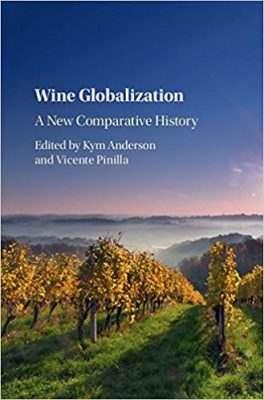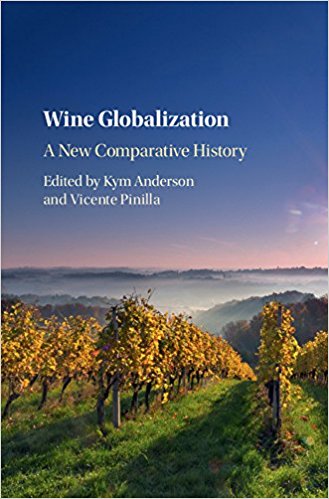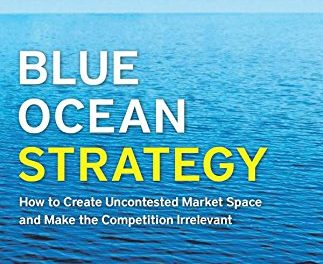 Editors: Kym Anderson and Vicente Pinilla
Editors: Kym Anderson and Vicente Pinilla
Publisher: Cambridge University Press – 546 pages
Book Review by: Sonu Chandiram
In 2016, the Wine Institute (located in California, which produces 90 percent of the country’s wine with a retail value of $34.1 billion) reported that Americans consumed 949 million gallons of wine, an increase of 27 million or 2.9 percent over 2015. The increase in 2015 over 2014 was 2.3 percent: 922 million gallons in 2015 versus 901 million gallons in 2014.
If you thought the increasing annual total wine consumption was due to population increase, I got news for you: our annual per-capita wine consumption has also been growing. Over the 10- year period from 2007 to 2016, each U.S. person consumed more wine than he or she did in the previous year: 2.47 gallons in 2007, steadily rising each year to 2.94 gallons in 2016, a 19 percent increase.
But our total national wine consumption rose much more: 27 percent, from 744 million gallons to 949 million gallons during the same 10-year period. This gap may be due to how the figures were collected and / or how they were calculated.
The average American wine consumer is far behind the typical European counterpart. The 2.94 gallons the average American consumes in a year accounts for only about one-eighth of what amount a typical Italian consumes, holding the top position, imbibing or adding to food over four times as much: 12.71 gallons. Close behind are the French, Swiss, Portuguese, and Austrians, according to Statista.
The wines we consume are not only produced here in the U.S. but also imported from other wine-growing and producing countries, as shown in this book.
Some 31 million tonnes (each tonne being 1,000 kilograms) of wine were produced worldwide in 2014. The top wine-producing countries in the world that year, according to a Food and Agriculture Organization (FAO) report were:
- Italy – 4.79 million tonnes
- Spain – 4.607 million tonnes
- France – 4.293 million tonnes
- United States – 3.300 million tonnes
- China – 1.700 million tonnes
- Argentina – 1.498 million tonnes
- Chile – 1.214 million tonnes
- Australia – 1.186 million tonnes
- South Africa – 1.146 million tonnes
- Germany – 920,000 tonnes
This is a uniquely rare work that compares and contrasts the wine markets in the top ten or so global wine-consuming and producing markets, in terms of supply and demand, imports and exports, and factors that lead to desirable or adverse outcomes, such as exchange rates, import duties, global competition, rising or declining incomes, and much more.
Twenty-nine professors and researchers in various universities in 10 countries – Argentina, Australia, Belgium Chile, France, Italy, Spain, South Africa, the United Kingdom, and the United States – authored the 18 chapters of this unique book on international wine markets and the various aspects of the wine business.
We list the chapters of this book below, organized around four Parts, to give you a bird’s eye view of its contents:
- Part I. Overview
- Introduction
- Global Overview
- Part II. Traditional Markets
- France
- Germany, Austria, and Switzerland
- Italy in 1938
- Italy from 1939
- Portugal
- Spain
- United Kingdom
- Other European, CIS, and the Levant
- Newer Markets
- Argentina
- Australia and New Zealand
- Chile
- South Africa
- United States
- Algeria, Morocco, and Tunisia
- Asia and Other Emerging Regions
- What’s Ahead
- Projecting Global Wine Markets to 2025
This very well researched book on the wine industry in about 20 producing and consuming countries discusses the major beneficial as well as catastrophic events that created fortunes for some or caused bankrupting for others. It provides an immense amount of data, some going back to a century and a half. This is a valuable resource for scholars of economic history as well as those who are involved in, or who follow the wine industry
The two editors take a close look at the history of the global wine industry as well as in particular countries, and the effects of globalization – global competition and related phenomena. They utilize a common methodology to examine and explain short- and long-term trends and cycles in wine production, consumption, and trade. New technologies, policies and institutions, changes in grape varieties, and currency rates of exchange, and are taken into account in this valuable book.
Editors:
Kym Anderson is Professor of Economics, and Executive Director of the Wine Economics Research Centre, and formerly Executive Director of the Centre for International Economic Studies at the University of Adelaide in Australia. He is also a Professor of Economics at the Australian National University in Canberra.
He is a co-founder and vice president of the American Association of Wine Enthusiasts, and a coeditor of its Journal of Wine Economics. His previously compiled compendium of global wine data (Global Wine Markets, 1961 to 2009: A Statistical Compendium) has been extended to cover 1860 to 2016 for this book.
Vicente Pinilla is Professor of Economic History at the University of Zaragoza in Spain. He is editor of Historia Agraria and Director of the Center for Depopulation and Rural Development Area Studies. He belongs to the editorial board of the Rural History in Europe series.
He is the author of Peaceful Surrender: the Depopulation of Rural Spain in the Twentieth Century, and is an editor of these books: Agriculture and Economic Development in Europe Since 1870, Markets and Agricultural Change in Europe from the 12th to the 20th Century, and National resources and Economic Growth: Learning from History.







